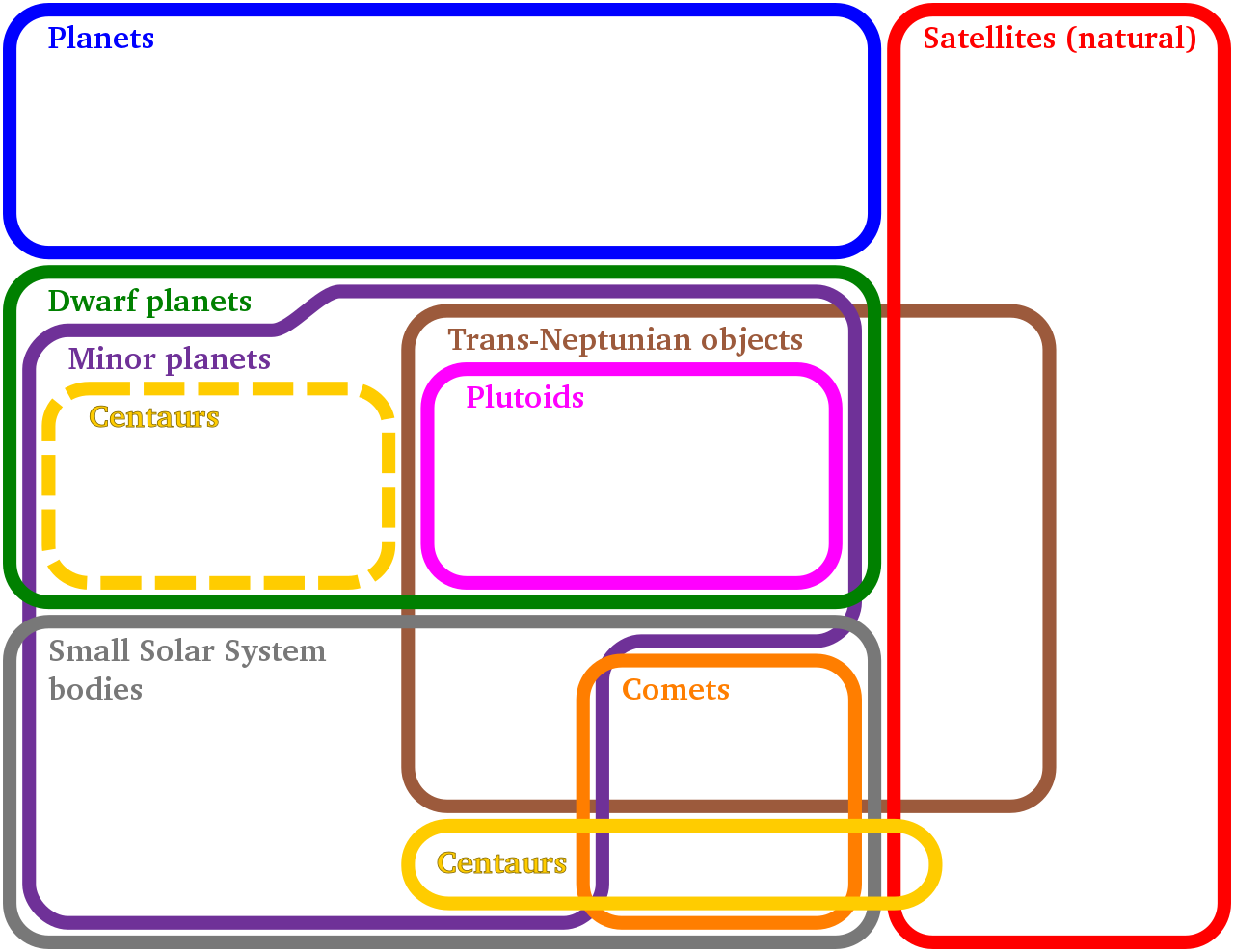They originally tried to name them “plutons” until geologists said “Not so fast, Buster!”
A prairie dog is not a dog. Small dogs and large dogs are dogs.
A sea lion is not a lion. Small lions and large lions are lions.
A [size] [object] is an [object]
Alan Stern coined the term dwarf planet , analogous to the term dwarf star , as part of a three-fold classification of planets, and he and many of his colleagues continue to classify dwarf planets as a class of planets. The IAU decided that dwarf planets are not to be considered planets, but kept Stern’s term for them.
From Wikipedia’s article on dwarf planets.
There’s also this handy-dandy image (Euler diagram of solar system bodies):

That’s good enough for me to not consider dwarf planets a taxonomic subcategory of planets. I can be convinced otherwise, but I’ll go along with the IAU for now.
Not a sop, but rather the residue of an attempt to sneak Pluto into the Planet Club by the back door. I note that there are still Plutonistas in this very thread who are still trying the same strategem. Here’s how it was supposed to go:
- Create a new category: Dwarf Planet
- Rename the category the real planets are in to either Major Planet or Classical Planet (I forget which)
- Create a new supercategory (Planet) combining both those categories.
- profit, er … celebrate Pluto’s retained planethood.
They managed to get step 1 passed, but at step 2, someone saw through their nefarious scheme and warned the rest of the convention. So it failed. (Most astronomers did not think Pluto belonged in the Planet Club.) Anyway we’re left with this useless category of Dwarf Planet. It really should be abolished. Consider that in the 15 years since it was created, they haven’t added any new ones.
Note that if the above scheme had worked, we’d have 13 planets now, not just 9.
Yeah, if you look at Earth, Ceres, and Pluto, and ask which two of those three objects are like each other, the honest answer has to be that it’s Earth and Ceres. Putting Ceres and Pluto in the same category is completely artificial.
@pulykamell, a proper diagram of that sort ought to have a specific place for Luna: They’re probably counting it as a “natural satellite”, but in many ways, it too is more like the rockball planets (in fact, more so even than the handful of larger moons, like Ganymede and Titan).
Allen Stern also created a category that some would consider to be an oxymoron, satellite planets, for objects that are planetary mass but orbit another planet. The IAU hasn’t accepted these as planets either.
This wasn’t a joke.
Read this. Just…just read this.
https://presstories.com/2021/01/04/this-strange-exoplanet-helps-astronomers-discover-planet-9/
Somewhat related to this thread, I was checking out a Wikipedia listing of all of the major objects in the Solar System (I was able to name the top 11 in order), and I noticed something interesting. If the list is correct, the Earth is the densest of all of them. Mercury is a close 2nd. Perhaps some of you already knew this, but I don’t recall seeing or hearing this fact before.
Whoops, forgot the link: List of Solar System objects by size - Wikipedia
What language is that ?
I think that’s because we have the cores of two planets. One from the proto-Earth before there was a Moon. And one from the planet that collided into it and formed the Moon. The Moon got more of lighter bits, we got more of the heavier.
Even many of the inhabitants are dense…
As for the objects Pluto and beyond, why not just call them “iceteroids”?
Because there are a lot of iceholes who would make it into a joke.
Did aliens attempting to copy our language write this?
On our edge The Solar System A strange story unfolds. A series Dwarf planets Go Eye sockets Trouble. To describe the event, Astronomers Present the concept of existence in a regionPlanet 9“. A planet is 10 times the size of Earth, very moving Strange. But this is imaginary because it still escapes all observations.
This fragment of text in the article appears to be Gujarati. சோலைல் So it looks like someone took an article in English (or maybe some other language), translated it to Gujarati in Google Translate, and then translated it back to English. Why someone would do this is beyond comprehension.
The description of the author of the article is also mysterious.
In the link to the name, the author’s name is given as “muhammad.”
Cary Douglas’s/muhammad’s/Wayne Ma’s other articles on the site are similarly garbled.
I would wonder why The Press Stories websites allows this, but it seems like the owner is also not a native English speaker.
Maybe he’s just copying other articles, and using the double-translation to mangle them enough that they’re not recognized as copies?
But why would anyone interested in science and technology want virtually incomprehensible versions of the articles?
Nobody. But the site owner wants clicks. It wouldn’t be the first link farm on the web.